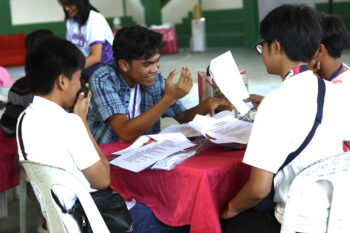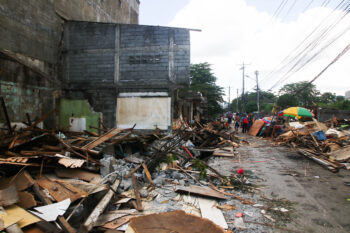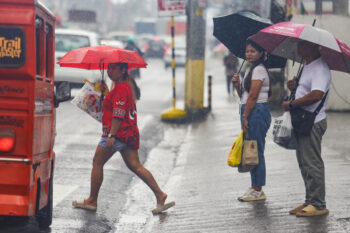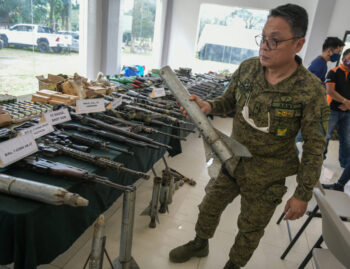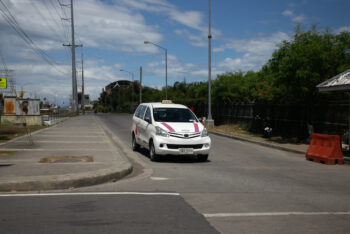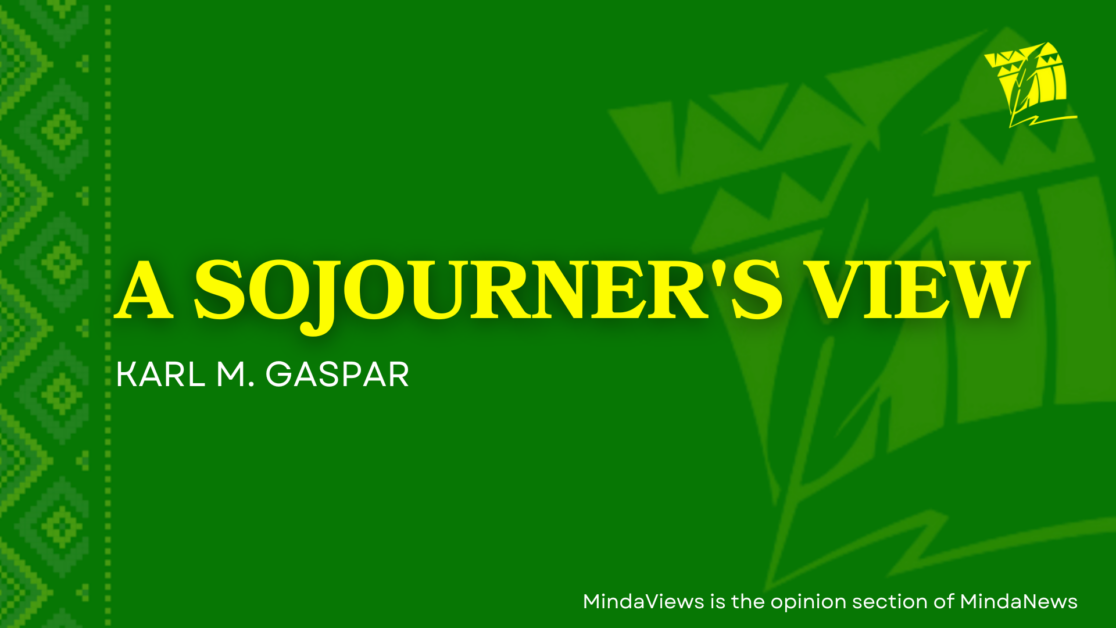
Last October 13, I sat as a member of the panel for the public defense of Antoine Laugrand, an Anthropology student of the University of Louvain (Belgium) on the French side. He presented his dissertation for consideration of the panel as a requirement to finish his degree in Ph.D. Anthropology. Unable to go to Louvain for the defense, I made myself available online.
Laugrand’s dissertation—“Showa tan Kashowa.” The Double and the Half. Cycles of Exchanges and Asymmetries between the Living and the Dead among the Ibaloy of Upper Loacan (Benguet, Philippines)—was a most fascinating ethnographic study. It could easily be considered one of the best ethnographic studies ever attempted by a non-Filipino of the Ibaloys of Benguet, one of the remaining indigenous communities in the Philippines who have held on to their cultural legacy and indigenous belief system despite the years of colonization, Christianization and encroachment of lowland Western culture.
While reading the 500-page manuscript complete with photos taken during his one-year fieldwork as well as illustrations (maps, graphs, etc.), I was struck at how the beliefs of the Ibaloy have remained intact. This is especially in relation to their belief that the spirits never really depart from their earthly abode after they die. An excerpt from his manuscript is as follows: “The Ibaloy refer to the decomposing body and the interiority of the newly deceased by a single term, kedaring, as if they were the same. Yet, they imagine the dead elsewhere, on a long postmortem journey, and also both able to return at every ritual and meal or if they need offerings. These contradictions show the unstable state of the kedaring, who are no longer truly among the living, and not yet fully among the dead, in a kind of transition between the two worlds. Their interiority and their remains make up a pair that, unlike the contained container of the human, is separated, fragmented, and decomposed. Like the karashowa, the kedaring is an interiority, the Ibaloy translating this word as ‘spirit.’ Like the bakdang body, its remains constituted by its (former) envelope. The kedaring’s transformation can thus only be completed when its body-container has completely disappeared into the earth of the dwelling, nourishing human crops like a fertilizer. In this way, death also conveys life.”
In other words, the Ibaloy believe that the spirits of their dead continue to interact with the living. This is why they continue to hold rituals where the dead are believed to share with their living relatives the food and alcoholic drinks served during these celebrations. And this impacts their view of their land. That the owners of these land are their ancestors and “humans… never see themselves as ‘owners’ of the land but as occupants indebted to their ancestors… They occupy it, cultivate it, and maintain it for their ancestors, who themselves own it… This space is also a place of exchange between the living and the dead, who are the masters of harvests and luck. Inherited from their forebears, heirs perpetuate their relationship with their ancestors by working the land.”
Many other indigenous communities across the Philippines (and other Third World countries) have the same belief in relation to those who have died and what happen to their spirits. In the psyche of most Filipinos today—despite having been colonized, Christianized and westernized—there is a lingering belief that there remains a strong connection between the living and the dead. We’ve never really fully discarded our ancestors’ indigenous belief system as we continue to pay respects to our dead because they continue to haunt us as we are constantly reminded that “naa ra sila sa atong palibot (they are just around).”
When Catholics dream about a dead grandparent or parent, they go to their parish office and pay a pamisa for them (which Pope Francis recently commented makes our church a “supermarket of services”). When someone in our family dies, we go through all the rituals to honor the dead and making sure we fulfill our responsibilities so that their souls will be put to rest. The nine days of novena, the hubkas on the 9th day and the celebration of 40th day after the death—where there are always candles and flowers offered even as a sumptuous meal is served—are all indications of our desire to please the dead.
Thus we celebrate All Saints Day and All Souls Day in the same manner we celebrate our town fiestas and the Christmas season! We flock to our cemeteries between October 31 and November 2, with many families even setting up their toldas to stay overnight beside the graveyards of their beloved dead. And food are actually placed on tombs in the belief that the spirits can enjoy their smell. (Growing up, my mother placed food on the family’s altar on November 1 and when we asked her why, she told us that the spirits of the dead were expected to arrive and they would be displeased if food was not served.)
Traffic around cemeteries become horrendous during these days and vendors and hawkers have a field day. So also the tig-kolekta sa parokya (those in the parish who look after the coffers). During funeral rites, there is a lot of weeping and gnashing of teeth. But the Kalag-kalag celebrations are festivities, everyone has a good time. Like Christmas, this is the day for the most delicious meals and there is a lot of drinking alcohol. In the cemeteries, loud music compete with each other. Children especially enjoy these celebrations as these are occasions for telling ghost stories.
Interesting that in Cebuano, we do not refer to these days as Adlaw sa mga Kalag, but we instead call it Kalag-kalag, which remains the popular term for this time of the year. Kalag is the Cebuano term for soul or spirit, but why is the word repeated (a common practice in this language to repeat a word, e.g., suroy-suroy, inum-inum, kanta-kanta, kasing-kasing). A linguist might provide the answer to this question, but one can theorize that it could refer to our indigenous belief that “the kalag repeats itself by coming back.”
There is of course, the item in Catholic doctrine—which we are all reminded every time we say The Apostles Creed—that refer to “sa panag-ambit sa mga Santos” (communion of saints). This refers to the whole community of faithful followers of Christ, living and dead, past, present and future. In experiencing the communion of saints, we embrace the community of believers––living and dead. We become believers of a community that stretches beyond space and time as we commune with all other believers who came before us, and believers who will come after us.
The Spanish friars who proselytized our ancestors (except those who had embraced Islam and the Lumads who couldn’t be reached by the friars) must have been perplexed as they observed the elaborate ways our ancestors honored the dead. This was the same experience they had in Mexico when they encountered the Incas and the Mayas. For all their efforts to eradicate what they would have considered the “superstitious manner” that our ancestors performed their rituals for their dead, these have persisted. When European and American missionaries (both Catholic and Protestants) replaced the Spanish friars, they, too, discouraged these rituals.
But like Mexico’s Día de los Muertos, religio-cultural traditions that go back to pre-colonial epoch cannot be obliterated by the constant attempt of Western missionaries—reinforced by western education—to label these as plain superstitious beliefs and encouraging the people to discard them. Perhaps in today’s fragmented societies in Third World countries, the affluent urbanites and intellectuals may discard their ancestors’ practices and would rather spend the Kalag-kalag in resorts away from graveyards, but in the rural and urban poor areas the simple folks continue to hold on to these rituals.
And yet, the same affluent urbanites and intellectuals (especially among the millennials and Gen-Z generations) are now embracing the concept of multiverse, “a hypothetical collection of potentially diverse observable universes, each of which would comprise everything that is experimentally accessible by a connected community of observers. The observable known universe, which is accessible to telescopes, is about 90 billion light-years across. However, this universe would constitute just a small or even infinitesimal subset of the multiverse.”
Because the concept of multiverse is explained in scientific terms through quantum mechanics and can easily be understood by a generation privileging computer technology, today’s adherents can easily embrace it as it “asserts the actual physical existence of different potential configurations of the known observable universe.” But the fact is that for many indigenous communities, like the Ibaloys, their cosmology for centuries has asserted this belief. And because the Lumads/katutubos are considered “primitive, uncivilized, pagans” (and all other pejorative terms attached to them), their cosmological beliefs remain marginalized in favor of those coined by scientists!
So in the end, whose wisdom will prove to hold the eternal truths of this universe? To one and all, have a soulful and meaningful Kalag-kalag celebrations!
(MindaViews is the opinion section of MindaNews. Redemptorist Brother Karl Gaspar is Mindanao’s most prolific book author. Gaspar is also a Datu Bago 2018 awardee, the highest honor the Davao City government bestows on its constituents. He is presently based in Cebu City.)

